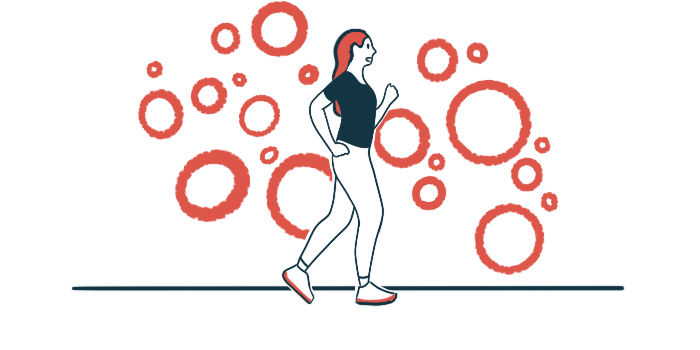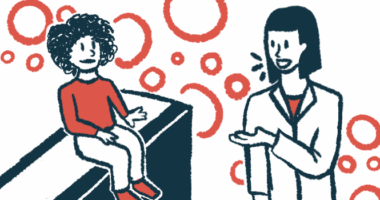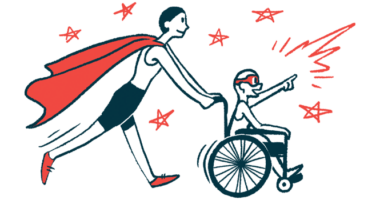Intensive rehabilitation seen to benefit adults and children with FA
Gains reported in various scales of ataxia severity across ages, disease stages

An intensive and multidisciplinary rehabilitation program eased symptoms of ataxia — lack of coordination and muscle control — and improved motor function in adults and children with Friedreich’s ataxia (FA), a study reported.
The sweeping program offered physiotherapy, occupational therapy, manual activities, psychological support, speech therapy, and clinical psychology.
“We demonstrated the effectiveness of intensive rehabilitation in [FA] individuals with different age range and disease severity,” the researchers wrote in the study “Effectiveness of rehabilitation intervention in persons with Friedreich ataxia,” published in the journal Frontiers in Neurology.
Rehabilitation as an alternative Friedreich’s ataxia treatment
A progressive disease that affects the nerves and muscles, FA is caused by excessive repeats of three nucleotides, the building blocks of DNA — one guanine (G) and two adenines (A) — in the FXN gene sequence.
Ataxia is a hallmark disease symptom, with common manifestations including lack of coordination, stumbling, and falling. While FA’s rate of progression varies, most patients will need a wheelchair within 10 to 20 years after their symptoms first appear.
Neurorehabilitation has been used successfully in people with spinocerebellar ataxia, another progressive disease that also affects gait, but few studies have investigated its potential in FA.
Researchers in Italy evaluated the benefits of an inpatient rehabilitation program for FA patients of varying ages and degrees of disease severity.
Their study recruited 42 patients — 29 adults and 13 children with mean age 20.7; 69% females. Disease onset was at a mean age of 11.7.
Most participants (27; 16 adults and 11 children) were ambulant, or able to walk with or without aids, while the remaining 15 patients were in wheelchairs (non-ambulant).
The multidisciplinary program was conducted over three weeks in children and four weeks in adults. All received 11 weekly physiotherapy sessions of 45 minutes each.
Participants were evaluated as a whole and as two groups — ambulant and non-ambulant patients — and the program was tailored according to their abilities. In ambulant patients, the goal was to improve balance and walking; for non-ambulant ones, focus was on control of the trunk, arm mobility, and transfer techniques, needed to move a patient from one surface to another.
Significant gains seen in SARA, a measure of ataxia severity
A primary goal was to assess changes in ataxia-related problems, determined using the Scale for the Assessment and Rating of Ataxia (SARA).
Additional goals included changes in the Friedreich’s Ataxia Rating Scale (FARS), a standard tool for evaluating neurological impairment, and in the nine hole peg test of finger dexterity.
Each parameter was evaluated at the start of the study (baseline measures) and at the end of the rehabilitation program.
Results showed that all patients benefited from rehabilitation. SARA scores decreased significantly, from 17.4 at baseline to 16.1 at the study’s end.
Similar gains were seen in total FARS scores, dropping from 53.7 to 49.4, and in its subscales, assessing the lower limbs, upper limbs, and upright stability. Peg test results showed a reduction in task execution time for both hands, but this finding was not statistically significant.
Improvements in SARA, FARS, and its subscales also were seen in the ambulant and non-ambulant subgroups, with similar changes in both. The only exception was for upright stability, whose improvements were significant only among ambulant patients.
Further testing in patients able to walk showed significant benefits across all tests, which included the six minute walk distance test (6MWT), the Timed Up and Go (TUG), and the Berg Balance Scale (BBS).
The 6MWT measures the maximum distance the patient is able to walk in six minutes on a hard, flat surface; TUG measures the time a person takes from sitting on a chair to stand up, walk for three meters, turn around and sit back on the chair; and BBS is a way to assess balance during sitting, standing and positional changes, where higher scores mean better balance.
In the 6MWT, the distance walked increased by an average of 24.5 meters after the rehabilitation program. BBS scores rose from a mean of 38.2 to 41.7, while the time spent to perform TUG fell by significant mean of two seconds.
Improvements reported in FARS were generally similar among adults and children, the researchers found, except for a higher reduction — meaning a greater benefit — seen for children in the lower limbs subscale of FARS.
The extent of the improvements recorded did not associate with either the number of GAA repeats or disease duration. A higher number of GAA repeats, however, has been linked to a younger age at disease onset, and to more severe or rapidly progressing symptoms.
Overall, rehabilitation in FA “can provide a meaningful clinical improvement in terms of outcome measures,” the researchers wrote. “The rehabilitation approach must not only focus on a single function but on multiple functions and also on activity and participation optimizing in the same time the contextual factors.”
Among study limitations, the scientists highlighted the lack of a control group and its somewhat low number of participants.







